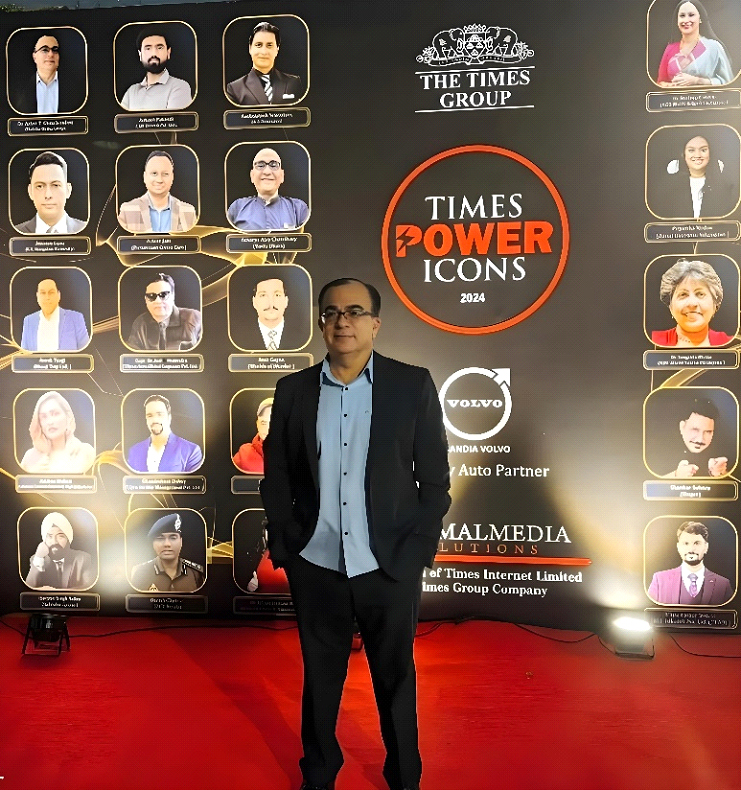The Future Of FMCG: In South East Asia – By Dr. Asher T. Gianchandani Co-founder & CEO Moksha Media Group
Q: WHICH MAJOR CONCEPTS DO YOU BELIEVE WILL DEFINE FMCG IN INDIA AND SOUTHEAST ASIA GOING FORWARD?
Well, In Southeast Asia and India, fast-moving consumer goods (FMCG) companies are undergoing very rapid transformation. As per the latest statistics, 580 million Indians are predicted to reach middle class by 2030 and 350 million is the estimated count in Southeast Asia. The rapidly growing middle class is driving demand for luxury items and solutions for simplifying life, the urbanism is another crucial element, we estimate that forty percent of Indians will live in cities by 2030, which will present great opportunities for quick-service cuisine and ready-made meals businesses. On an important subject, sustainability is no longer a choice; Indian consumers and Southeast Asian consumers like to purchase environmentally friendly brands. In both spheres, e-commerce will keep altering consumer behaviour. As for the health and wellness sector that is growing rapidly, functional foods will become more and more sought for in Southeast Asia; the nutraceutical market in India is expected to rise exponentially in the next 5 years.
Q: OVER TIME, WHAT DO YOU SUPPOSE WILL HAPPEN TO THE FMCG BUYING BEHAVIOUR IN THESE REGIONS?
I believe that customers in both India and South-east Asia are growing more discriminating and demand integrity. So, for products that claim where they come from, how they’re created, and what ingredients they really contain, Southeast Asian customers and Indian consumers are ready to spend more. Online contact will keep expanding rapidly. Most consumers in Southeast Asia and India choose what to buy based on internet reviews and recommendations from powerful individuals. People seek goods that complement their values and way of life, so personalizing will become very crucial. Simultaneously, though, companies who are transparent about their social impact and environmental friendly initiatives are growing more and more trustworthy.
Q: HOW WILL ARTIFICIAL INTELLIGENCE AFFECT FMCG PRODUCTS’ SALES STRATEGIES?
I believe that FMCG marketing strategies of both sectors will fast include artificial intelligence as a major tech. Certainly , marketing campaigns worldwide will involve artificial intelligence. No different will be India and Southeast Asia. AI will allow companies to analyse real-time consumer behaviours and preferences, nationally and locally, thereby enabling them to create custom made ads for every individual. Leading Indian FMCG firms will definitely employ artificial intelligence solutions to enhance ads targeting, improving conversion rates . Predictive analytics will definitely allow companies to detect trends like the rising demand for plant-based products or diets that strengthen the immune system before they peak. The drastic reduction on times answer with artificial intelligence chatbots will also keep improving customer service which will impact positively consumers reviews. Also, a dynamic pricing systems driven by artificial intelligence will guarantee competitive rates and simultaneously will boost profitability.
Q: IN WHAT WAYS DO YOU SEE FRESH TECHNOLOGIES LIKE AR AND VR TRANSFORMING THE FMCG SECTOR?
In the innovative technologies spheres, 3D , AR and VR will certainly modify consumer interaction with brands. Thanks to AR enabled virtual try-ons, beauty companies such as Nykaa have already seen their conversion rates jump by thirty percent in India. In the same vein, Southeast Asian FMCG firms are using VR to demonstrate their environmental friendliness by displaying items like how goods move from the farm to the store shelf. Interactive packaging that lets consumers scan QR codes to get gamified experiences or more product knowledge is increasingly found on more goods. For example, an Indian beverage company claimed that AR-enabled packaging piqued consumers’ curiosity forty percent more. These technologies leave a long-lasting effect and make individuals brand loyal. Thus, they benefit not only sales.
Q: WHEN FMCG FIRMS ATTEMPT TO INCORPORATE FRESH TECHNOLOGIES LIKE ARTIFICIAL INTELLIGENCE, WHAT ISSUES ARISE? HOW ARE THESE ISSUES RESOLVED?
You see, the main issues are cost, a lack of trained labor, and data privacy. Using AI solutions in India might cost anywhere from ₹40 lakhs to ₹4 crores, some small firms might not be able to afford. In the same vein, 65% of Southeast Asian companies claim that a shortage of qualified personnel causes major issues. Companies should start small and concentrate on things like demand prediction or personalizing marketing before they expand if they want to overcome these challenges. Working with AI solution providers and imparting new skills to employees can also help to close talent shortages and building trust with consumers by being transparent about how data is used helps to guarantee that privacy regulations are respected.
Q: HOW WILL E-COMMERCE AFFECT SALES OF FMCGS IN INDIA AND SOUTH-EAST ASIA?
I believe that more individuals having smartphones and online businesses like Amazon, Flipkart, and Meesho would probably help India’s online buying sector to reach $200 billion within the next 3 years. With Shopee and Lazada the most often used websites, Southeast Asia’s e-commerce market is also rather vibrant. Social business is seeing a lot of expansion. Nowadays, at least 50% of Indians and 60% of those living in Southeast Asia purchase goods straight from apps. Also, using subscription models—which are growing in popularity—people in cities are also registering for consistent delivery of groceries and personal care products.
Q: HOW CREATIVELY SHOULD FMCG FIRMS MARKET THEIR GOODS TO REMAIN COMPETITIVE?
Personalization will be crucial; Indians and Southeast Asians are more likely to purchase from companies providing tailored customers experiences. AI-powered campaigns will target individuals depending on their preferences, therefore empowering customers and making them feel significant. Also, omnichannel marketing is another must-have since it ensures a seamless connection between the offline and online activities. When choosing a brand, 45% of customers in both areas consider its environmental pledges, this implies that the core of marketing narratives has to be sustainability. Material created by artificial intelligence and voice search optimization will help FMCG companies stand out in already crowded sectors.
Q: FUTURE FMCG WILL RELY ON SUSTAINABILITY; HOW CAN BUSINESSES INCLUDE IT IN THEIR STRATEGIES?
Consumers purchases will mostly consist on sustainability. Of Indian consumers, almost 70% will actively search for brands that clearly show how they respect the environment; of Southeast Asian consumers, 68% will do so. Food and beverage firms must make ethical suppliers, utilize biodegradable packaging and containers that may be repeatedly used. Also, dealing with local communities and NGOs will certainly helps make things more realistic. ITC’s “Mission Sunehra Kal,” which helped India save water and boost its brand, is another instance. In the same vein, consumers of Southeast Asian companies supporting sustainable farming by means of local farmers are developing increasing trust and loyalty for these brands.
Q: HOW MANY SMALL AND MEDIUM-SIZED FMCGS USE ARTIFICIAL INTELLIGENCE TO CHALLENGE LARGER BUSINESSES OR OUT-COMPETE LARGER CORPORATIONS?
Well, easy on the wallet, cloud-based AI solutions will help Indian and Southeast Asian small and medium-sized companies understand consumers behaviour and will identify unique markets. Using artificial intelligence, one Indian snack company discovered that vegan snacks were in increasing demand and responded with a 40% increase in sales in just six months. Small and medium-sized companies will use artificial intelligence to create fascinating, reasonably priced ads that persuade consumers to interact with and purchase from them on social media. So. by being swift to adapt and concentrating on unmet requirements, smaller fast-moving consumer goods (FMCG) companies will carve a sizable portion of the market, AI will not only be for large companies. Cloud-based tools will enable smaller businesses determine consumer preferences. Also wise is concentrating on particular markets. AI will assist in locating particular holes bigger companies overlook. Social media is a terrific method to connect people, and artificial intelligence tools can enable you to create focused initiatives involving individuals with out having to pay for a lot of work involved. It’s all going to be about being smart and fast technologically to advance.
Q: IN THE NEXT TEN YEARS, HOW WILL THE FAST-MOVING CONSUMER GOODS (FMCG) SECTORS IN INDIA AND SOUTHEAST ASIA DEVELOP?
In the next 10 years, well , FMCG business will be revolutionized, fast-moving consumer goods (FMCG) market will expand really rapidly in India and Southeast Asia. India’s market is predicted to be valued at approx. ₹120 lakh crores ($1.5 trillion) by 2030; Southeast Asia will be more than $300 billion. Most brands will make increasing use of artificial intelligence, augmented reality, and virtual reality to produce unique, interesting consumer experiences. Sustainability will be the standard rather than a differentiator going forward. Definitely, FMCG’s future will be shaped by customer attention since data and technology will lead to stronger relationships with consumers.
Q: IN A FAST CHANGING ENVIRONMENT, HOW CAN FMCG FIRMS MODIFY THEIR SUPPLY CHAINS TO GRAB MORE OF THE MARKET?
Yes supply, big challenge, so fast-moving consumer products companies will have to build more flexible and robust supply networks. This will implies employing AI technologies and real-time data to track supplies and forecast demand in real-time, so preventing running out of stock or having too much on hand, and in order to reduce delivery times and expenses, they should also concentrate on localization—that is, acquiring supplies and bringing items closer to their intended sale sites. Having dependable logistics providers for the last mile of delivery will also be very crucial as e-commerce keeps developing. Customers’ trust and loyalty in the supply chain will also be strengthened by sharing with them knowledge regarding the origins of items.
Q: HOW CAN FMCG FIRMS GAIN A LARGER PORTION OF THE MARKET BY MEANS OF BRAND CREDIBILITY?
Being Real will be everything in the market of today. People—especially younger ones— can spot straight away when someone is lying. Companies that produce fast-moving consumer items will increasingly have to offer actual tales about their roots, values, and efforts at change. This could be f launting local food sources, fair trading, or environmental preservation initiatives. Being real also entails being honest about faults and paying attention to client comments. If a brand keeps true to its story and owns it, people will believe and remain with it for a long period.
Q: HOW CRUCIAL IS NEW PRODUCT DEVELOPMENT FOR FMCG FIRMS SEEKING A LARGER MARKET SHARE?
Maintaining competitiveness requires constant development of fresh goods. Making items that fit particular consumer needs—such as those that satisfy your health, environmental conscience, or simple usability—should be the main priorities for FMCG firms. For those who live in cities and are always on the go, for example, ready-to-eat items; for the rising vegan market, plant-based solutions. By use of artificial intelligence and data analytics, brands will be able to identify trends and new market gaps, so enabling faster and more efficient release of products. Not only may new products be innovative, but other things as well. Innovative formats, tastes, or packaging can also be new.
Q: IN A COMPETITIVE MARKET, WHAT PRICE STRATEGIES MIGHT BUSINESSES MANUFACTURING CONSUMER GOODS APPLY TO ACQUIRE A LARGER PORTION OF THE MARKET?
Yes price strategies, well not only should superior options be utilized, but also less expensive ones. AI allows FMCG firms to examine consumer behaviour and create pricing that varies depending on demand, competition, and season of the year. Tiered pricing—which offers high-end, mid-range, low-cost options— allows also to reach more individuals. Value packs or monthly services can entice people to purchase repeatedly. Discounts, package offers, or loyalty programs helps increase short-term sales in fiercely competitive sectors. So these strategies will also enable a clientele of devoted consumers to be developed.
Q: TEN YEARS FROM NOW, WHAT DO YOU SUPPOSE THE GROCERY STORE BUSINESS IN SOUTHEAST ASIA WILL LOOK LIKE?
Ten years, well we should be monitoring FMCG in South-East Asia and india on a permanent basis, tech-savvy residents of the area and quickly expanding economies that will allow fresh ideas to surface. More companies will leverage VR, AR, and artificial intelligence to provide engaging, personalized experiences. Also, environmental minded products will set the standard for how sustainability will be achieved. Most of the FMCG companies will operate online, so social commerce will make it more difficult to distinguish purchasing from leisure. It all will revolve on a consumer-first perspective. Technology and data will definitely enable companies to engage in significant means of customer connection.








